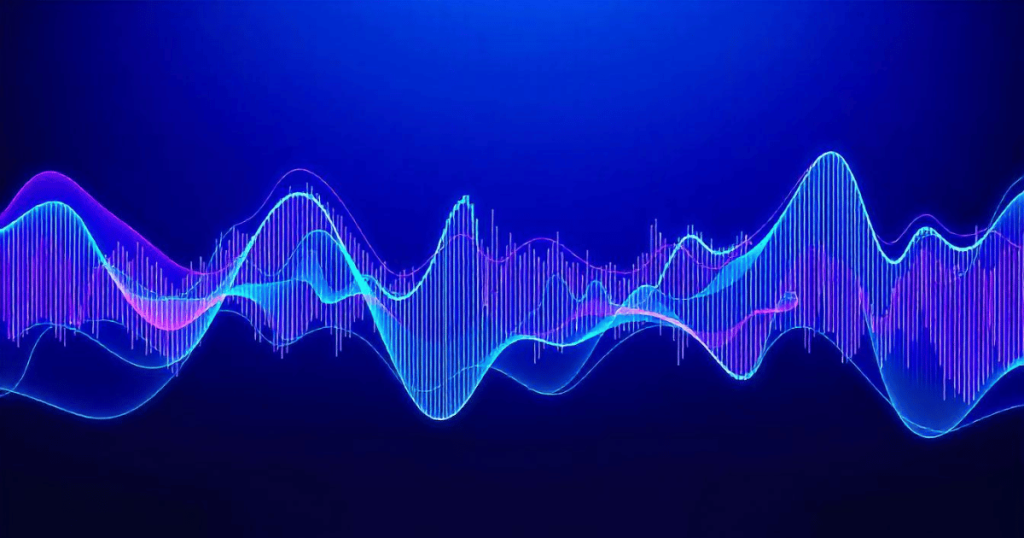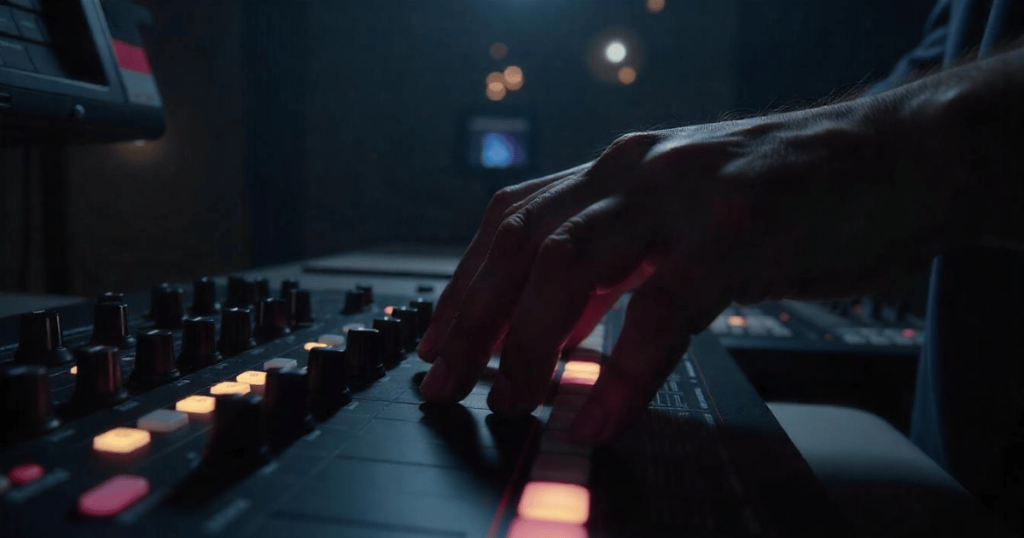In the vibrant, ever-evolving landscape of contemporary music, the rap beat stands as the pulsating heart of a genre that has, for decades now, redefined the art of storytelling and sonic innovation. At Beatstorapon, we celebrate the art of crafting iconic rap beats that resonate with audiences worldwide. Our in-depth insights on rap beats reflect our passion for innovative music production. Like a well-tailored suit, a hit rap beat is meticulously constructed—layer upon layer—each element carefully chosen to serve both the head and the heart of the listener. To truly understand what makes a rap beat resonate, one must delve into its anatomy: from the primal thump of the bass drum to the intricate interplay of digital samples and analog textures, every facet contributes to an overarching narrative that is as culturally significant as it is sonically arresting.

In this exploration, we’ll journey through the history, craft, and cultural impact of rap beats. We’ll dissect the musical DNA of hits that have defined eras, drawing on insights from seminal figures in music journalism—voices like Greg Kot’s insightful commentary, Jim Fusilli’s measured critique, Jon Caramanica and Jon Pareles’s deep dives into musical nuance, and Nate Chinen’s jazz-inflected appreciation of rhythm and texture. We’ll also channel the incisive, reflective style of Chris Richards, the analytical rigor of Allan Kozinn, and the market-savvy perspective of Hugh McIntyre to provide a comprehensive analysis that honors both the art and the commerce of beat-making.
I. The Foundations of the Rap Beat: A Historical Perspective
The rap beat, as we know it today, is the culmination of decades of musical evolution. Its lineage can be traced back to the late 1960s and early 1970s when African American musical innovators began experimenting with percussive loops and rhythmic repetition. At its core, a rap beat is an embodiment of both tradition and innovation—a sonic canvas where the echoes of funk, soul, jazz, and even rock converge to form a distinctly urban soundscape. The roots of hip hop can be traced back to the vibrant beginnings of the genre (the roots of hip hop)…
A. The Legacy of Funk, Soul, and Jazz
In the early days, the seeds of rap were planted in the grooves of funk and soul records. Bands like Parliament-Funkadelic, Sly and the Family Stone, and James Brown’s incomparable funk ensemble provided more than just a rhythmic backdrop—they delivered a visceral sense of groove that invited movement and conversation. The beats from these records were not merely timekeepers; they were statements of identity, rebellion, and community. It was in the breakbeats—the isolated drum solos—that DJs discovered the raw power to engage crowds, setting the stage for what would eventually become hip hop this evolution is well documented, as seen in Rolling Stone’s take on hip-hop evolution, which chronicles the genre’s milestones.
As jazz infused its own complex layers into American music, its influence on the rap beat grew subtly yet significantly. Jazz’s penchant for improvisation and its intricate, unpredictable rhythms found an echo in the sampling culture of hip hop. In the hands of pioneering producers, jazz samples were transformed into hypnotic loops that both challenged and delighted the listener, a process that would come to define much of what is revered in modern rap production.
B. The Birth of Sampling and Digital Innovation
The advent of sampling in the 1980s marked a turning point. With the introduction of affordable digital equipment, producers began to unearth and repurpose snippets of older records, recontextualizing them within the framework of a contemporary beat. This digital revolution democratized music production, allowing bedroom producers to challenge established norms and rewrite the rules of what a beat could be.
Consider the groundbreaking work of DJ Premier and Pete Rock, whose deft use of sampling reintroduced vintage sounds with a modern twist. Their work wasn’t just about nostalgia; it was about innovation—using the past as a building block for the future. In the process, the rap beat became a living archive, a constantly evolving repository of musical history where every sample carried with it layers of meaning and memory. For a deeper dive into beat construction techniques, check out our comprehensive Rap Beats Ultimate Guide, which details the intricate components of drum patterns, bass lines, and sampling. Additionally, exploring different styles—like trap, boom bap, and lo-fi—can provide further context; see Exploring Subgenres: How to Make Trap, Boom Bap, and Lo-Fi Rap Beats.
C. The Emergence of the Producer as Artist
Historically, the producer in rap was once relegated to the role of a behind-the-scenes technician. However, as the genre matured, producers began to step into the limelight, their signature sounds becoming as synonymous with the music as the MCs who rapped over them. Producers like Dr. Dre, Timbaland, and Kanye West redefined what it meant to be a beatmaker, blending musical influences from various genres to craft beats that transcended mere accompaniment. Their work underscored a key realization: in rap, the beat is not just a backdrop but a protagonist in its own right.
II. Dissecting the Components: What Makes a Beat Stand Out?
At its essence, a hit rap beat is a finely tuned machine, with every component contributing to a dynamic whole that can energize, captivate, and even transform the listener’s mood. Let’s break down these components, drawing on both technical analysis and cultural context.
A. The Drum Pattern: The Foundation of Groove
Every great beat starts with the drum—a sound that is as primal as it is precise. The kick, snare, hi-hats, and percussion all work in tandem to establish a rhythmic pulse that can be both hypnotic and infectious and producers often rely on in-depth tutorials such as those found on Sound on Sound’s beat-making techniques for guidance..
- The Kick Drum: Often the unsung hero, the kick drum provides the low-end thump that anchors the beat. Its placement is crucial—it can drive the momentum forward or lay a heavy, deliberate foundation that evokes a sense of gravity and inevitability.
- The Snare Drum: Complementing the kick, the snare offers a sharp contrast, often landing on the backbeat. Its crisp snap serves as a punctuation mark in the rhythmic sentence, balancing the beat’s low frequencies with a higher, more percussive quality.
- Hi-Hats and Cymbals: These add texture and complexity. The rapid-fire hi-hats, whether programmed in staccato bursts or laid down in syncopated rhythms, inject an element of urgency and energy. Meanwhile, the occasional crash or ride cymbal can serve as an aural accent, marking transitions or emphasizing key moments within a track.
- Percussive Samples and Unconventional Sounds: Beyond the standard drum kit, many producers incorporate found sounds—claps, snaps, even environmental noises—into their beats. These elements add a layer of uniqueness and character, making the beat stand out in a sea of similar rhythms.
B. The Bass Line: The Heartbeat of the Beat
If the drums are the skeletal structure, the bass line is the beating heart. It fills the spaces between the drums, providing a counterpoint that is both melodic and rhythmic. A well-crafted bass line does more than just add depth—it interacts with the drums, creating a conversation that can be as dynamic as any dialogue between MC and audience.

In the context of a hit rap beat, the bass is often crafted to groove in tandem with the drums, enhancing the physicality of the music. Producers meticulously shape their bass sounds—often distorting, filtering, or modulating them—to ensure they cut through the mix, yet remain tightly interwoven with the rhythmic structure. This delicate balance is a testament to the producer’s skill, and it’s one of the defining characteristics of beats that resonate on a visceral level.
C. Melody and Harmony: The Emotional Texture
While the rhythmic elements provide the structural backbone, it is the melody and harmony that imbue a beat with emotional depth. In rap, where lyrical prowess often takes center stage, the instrumental must be compelling enough to support and elevate the vocals and a solid understanding of music theory—such as the lessons available on MusicTheory.net—can enhance the crafting of compelling beats.
- Chord Progressions and Synth Textures: Modern rap beats frequently incorporate lush synth pads, subtle chord progressions, and atmospheric textures. These elements can evoke a range of emotions—from the melancholy of a soulful ballad to the exuberance of a celebratory anthem. The art lies in crafting a soundscape that complements the lyrical narrative without overwhelming it.
- Melodic Hooks: Just as a catchy hook in a chorus can elevate a song, a memorable melodic motif in the beat can transform an instrumental from mundane to iconic. This is where the producer’s musical intuition comes into play—identifying a simple, yet effective melodic idea that can be repeated, varied, and layered throughout the track.
- The Role of Sampling in Melody: Sampling, when used judiciously, can inject a beat with a sense of nostalgia or cultural reference that deepens its emotional impact. Whether it’s a snippet of a soulful vocal, a vintage keyboard riff, or a short jazz solo, these musical echoes serve as bridges between eras, connecting the listener to a broader musical lineage.
D. Arrangement and Dynamics: The Storytelling Arc
A hit rap beat is more than just a static loop—it’s an evolving narrative. Effective arrangement and dynamic shifts are what keep the listener engaged, creating peaks and valleys that mirror the emotional journey of the lyrics.
- Intro, Verse, and Chorus Dynamics: Like any good story, the structure of a beat needs to have a clear beginning, middle, and end. The introduction sets the stage, establishing the tone and mood. As the track progresses, the beat evolves—sometimes becoming denser and more intricate, at other times stripping back to allow the vocals to shine.
- Bridges and Transitions: Seamless transitions between different sections of a track are essential. A well-placed breakdown, a sudden shift in rhythm, or an unexpected change in instrumentation can serve as powerful narrative devices, highlighting key moments or signaling a shift in the lyrical theme.
- The Role of Silence and Space: Equally important as the sound is the space around it. Strategic use of silence or minimalistic sections can create tension and anticipation, making the eventual return of the full beat all the more impactful. This interplay between sound and silence is a hallmark of sophisticated beat-making, one that requires a deep understanding of both musical theory and the psychological impact of sound.
III. Cultural Resonance: The Beat as a Reflection of Society
Beyond the technical mastery, what truly sets a hit rap beat apart is its ability to capture the zeitgeist. In a genre that has always been deeply intertwined with social and political narratives, the beat is not just a musical element—it’s a cultural artifact.
A. A Voice for the Marginalized
From its inception, hip hop has been a platform for voices that were often marginalized by mainstream society. The beat, with its hard-hitting rhythms and raw energy, provided a canvas upon which artists could articulate their struggles, hopes, and dreams. In this sense, the beat is as much a part of the message as the lyrics themselves the cultural impact of these beats is undeniable; even the Grammy perspective on hip-hop history underscores their importance. It carries with it the weight of historical inequity, the pulse of urban life, and the resilience of communities determined to be heard for example bands like James Brown’s incomparable funk ensemble (James Brown’s influence on funk and soul) played a pivotal role.
B. Global Influence and Hybridization
In today’s interconnected world, the influence of the rap beat transcends geographical boundaries. For further insight into this cultural foundation, check out The Art of Rap Beats: How They Define Hip-Hop Music, which explores how these sounds continue to shape the genre. The evolution of these rhythms—from local origins to a global phenomenon—is detailed in The Evolution of Rap Beats: From the Bronx to the Global Stage. Producers from across the globe have adopted and adapted the core elements of the genre, infusing them with local musical traditions and flavors. This cultural hybridization has led to innovative sub-genres and cross-genre collaborations, where traditional African rhythms, Latin beats, and even elements of classical music are woven into the fabric of modern rap the art of sampling revolutionized music, as detailed in BBC Culture’s exploration of hip-hop sampling. The result is a dynamic, ever-evolving soundscape that reflects the global diversity of the hip hop community.

C. Commercial Success vs. Artistic Integrity
In the age of digital streaming and viral hits, the commercial success of a rap beat is often measured in clicks, streams, and chart positions. However, as any seasoned critic will attest, commercial viability and artistic integrity are not mutually exclusive. The most enduring beats are those that manage to bridge the gap—capturing the mainstream imagination while remaining true to the innovative spirit of the genre. This delicate balancing act is perhaps best exemplified by producers who, while achieving massive commercial success, continue to experiment and push the boundaries of what a beat can be.
D. The Beat as a Catalyst for Innovation
The rap beat is a constantly evolving entity, shaped not only by technological advances but also by the creative impulses of its makers. From the early days of the MPC and turntables to today’s sophisticated digital audio workstations, each technological leap has expanded the creative palette available to producers. This ongoing evolution has ensured that the beat remains at the cutting edge of musical innovation—always ready to absorb new influences and redefine the boundaries of sound and the evolution of hip-hop beats has been chronicled by major publications like The New York Times.
IV. Case Studies: Dissecting Iconic Beats
To truly appreciate the complexity of what makes a rap beat stand out, it’s instructive to examine some of the genre’s most iconic productions. By analyzing the elements that contribute to their success, we can gain a deeper understanding of the craft behind the art as seen in Pitchfork’s deep dive into rap production, producers continuously push the boundaries of beat-making.
A. Dr. Dre’s “The Chronic” – A Blueprint for Modern Production
Dr. Dre’s seminal album The Chronic is often cited as a cornerstone of modern rap production. Its beats, characterized by deep, rumbling basslines, crisp snares, and layered synth textures, created a sound that was both futuristic and rooted in the funk traditions of the past. Dre’s ability to blend these elements into a cohesive whole not only defined the West Coast sound but also set a template that countless producers have since followed.
In The Chronic, every beat is a study in contrast—between minimalistic spaces and richly layered textures, between the mechanical precision of digital sampling and the organic warmth of live instrumentation. This duality is what gives Dre’s work its enduring appeal, resonating with both purists and casual listeners alike.
B. Kanye West’s “My Beautiful Dark Twisted Fantasy” – The Art of Sonic Experimentation
Kanye West’s magnum opus, My Beautiful Dark Twisted Fantasy, represents a peak in the evolution of the rap beat. Here, West and his collaborators push the boundaries of what a beat can be, blending orchestral arrangements, intricate sampling, and hard-hitting percussion into a sound that is as grandiose as it is intimate. The production on this album is a masterclass in dynamic range—shifting effortlessly between bombastic crescendos and stripped-back interludes that allow the lyrics to breathe.

The genius of West’s approach lies in his fearless experimentation. He treats the beat as an instrument in its own right, one that can convey emotion and narrative without the need for words. This holistic approach to production has influenced a generation of artists, encouraging them to view the beat not just as a backdrop for rapping, but as an integral part of the storytelling process.
C. Metro Boomin’s Modern Take – The Evolution of Trap
In the 2010s, the trap subgenre emerged as a dominant force in rap, characterized by its stuttering hi-hats, booming bass, and dark, atmospheric soundscapes. Producers like Metro Boomin have taken these elements to new heights, crafting beats that are both hypnotic and meticulously programmed. The trap beat’s appeal lies in its relentless, almost mechanical energy—a sound that speaks to the modern digital era while still evoking the gritty, street-level narratives of its predecessors.
Metro Boomin’s work is a testament to the evolution of beat-making. By embracing the possibilities of modern software and digital instruments, he has been able to create beats that are as innovative as they are commercially viable, bridging the gap between underground credibility and mainstream appeal.
D. Sampling as a Narrative Device: The Art of Recontextualization
Sampling remains one of the most contentious yet celebrated practices in rap production. When done with finesse, it transforms a snippet of an old record into a vibrant, new context that enriches the beat’s narrative. Consider the work of producers like J Dilla, whose unconventional sampling techniques redefined what it meant to create a beat. Dilla’s approach was not merely technical—it was deeply emotional. Each sample was treated as a story, imbued with the history of the original recording, yet repurposed to serve a new creative vision.
This process of recontextualization is at the heart of the rap beat’s enduring appeal. It allows for a dialogue between the past and the present, creating layers of meaning that can be both personal and universal. For many fans, a great beat is one that resonates not just on a sonic level, but on an intellectual and emotional one as well.
V. The Role of Technology in Shaping the Rap Beat
As we’ve seen, the evolution of the rap beat is inextricably linked to advancements in technology. The tools available to producers have continually expanded, allowing for more intricate, innovative, and experimental soundscapes. Let’s delve into how these technological shifts have shaped the modern rap beat.
A. The Transition from Analog to Digital
In the early days of hip hop, producers relied on analog equipment—drum machines, turntables, and tape machines—to craft their beats. The tactile nature of these tools imparted a certain warmth and unpredictability to the sound. However, as digital technology emerged, it ushered in an era of precision and reproducibility that transformed beat-making research on how digital audio workstations have transformed music production (industry research) reveals a new era in beat creation.
Digital audio workstations (DAWs) like Pro Tools, FL Studio, and Ableton Live have become the modern producer’s canvas. They allow for meticulous editing, layering, and manipulation of sounds, enabling the creation of beats that are both complex and meticulously polished. While some critics lament the loss of analog warmth, many argue that digital tools have simply expanded the creative possibilities, allowing producers to push the boundaries of what is sonically achievable.
B. The Democratization of Production
Perhaps one of the most significant impacts of digital technology on rap beats is the democratization of music production. Where once the tools for professional beat-making were prohibitively expensive and confined to specialized studios, today’s technology has put the power of production into the hands of anyone with a computer. This shift has led to an explosion of creativity and diversity in the sound of modern rap, as producers from all corners of the globe contribute their unique perspectives to the genre.

This democratization has also given rise to a new wave of homegrown producers who are unburdened by the constraints of traditional recording environments. Their work often reflects a raw, unfiltered approach that is as authentic as it is innovative, further enriching the tapestry of the rap beat.
C. The Future of Beat-Making: AI and Beyond
Looking forward, the intersection of artificial intelligence and music production is poised to introduce yet another paradigm shift in the creation of rap beats. AI-powered tools are already being used to generate rhythms, suggest chord progressions, and even create entire compositions. While this technology raises questions about the nature of creativity and authorship, it also promises to expand the horizons of what is possible in beat-making.
Producers of the future may find themselves collaborating with algorithms, blending human intuition with machine precision to create beats that are both technically flawless and emotionally resonant. Whether this will lead to a new era of musical innovation or spark debates about the essence of creativity remains to be seen, but one thing is clear: the rap beat will continue to evolve, shaped by the relentless march of technology and the creative spirit of those who dare to push its boundaries.
VI. The Impact of the Hit Beat on Rap Culture and Beyond
A hit rap beat does more than just drive a chart-topping single—it shapes the culture, influences fashion, and even alters the landscape of social movements. The significance of a beat that stands out is not solely measured by its commercial success but by its cultural resonance.
A. Empowering the Narrative
In a genre where words matter as much as the sound behind them, the beat plays an essential role in amplifying the message. It provides the framework upon which the lyrical narrative is built, often becoming a symbol of resistance, identity, and empowerment. For many communities, a great beat is a rallying cry—a call to action that unites people under a shared cultural banner.
B. The Beat as a Cultural Touchstone
Iconic beats often become inextricably linked with the identity of the era in which they are released. They capture the mood of the moment, reflecting both the struggles and the triumphs of a generation. Whether it’s the defiant swagger of West Coast rap or the hypnotic allure of trap, these beats serve as cultural touchstones—audio snapshots of a particular time and place that continue to resonate long after the moment has passed.
C. Influencing Global Soundscapes
As the rap beat’s influence spreads beyond the confines of American hip hop, it begins to shape global music trends. Artists from different cultural backgrounds have adopted and adapted the signature elements of rap beats, infusing them with regional flavors and creating entirely new genres. This cross-pollination has enriched the global musical landscape, proving that the beat is not just a product of its time but a timeless language that transcends borders.
VII. Reflections on the Craft: The Producer’s Perspective
At the heart of every memorable rap beat is the visionary producer—a sonic architect who transforms abstract ideas into tangible soundscapes. The process of creating a hit beat is as much an art as it is a science, requiring a delicate balance of technical expertise, creative intuition, and cultural awareness.
A. The Creative Process
For many producers, the journey begins with a spark—a simple drum loop, a stray sample, or a fleeting melodic idea. This initial concept is then meticulously sculpted, layer by layer, until it evolves into a fully realized beat. Throughout this process, the producer is constantly engaged in a dialogue with the material, making decisions that range from the minutiae of EQ settings to the broader structural arrangement of the track.
B. The Emotional Investment
Behind the technical decisions lies a profound emotional investment. A beat is not just a collection of sounds; it is a reflection of the producer’s experiences, influences, and aspirations. When a beat resonates with an audience, it is often because it carries with it the weight of personal history and cultural significance. This emotional dimension is what elevates a beat from being merely functional to being a work of art.

C. Collaboration and the Ecosystem of Creativity
The creation of a hit rap beat is rarely a solitary endeavor. It is often the result of collaboration between producers, engineers, vocalists, and even visual artists. This collaborative ecosystem fosters an environment where ideas can be challenged, refined, and ultimately transformed into something greater than the sum of its parts. The dynamic interplay between different creative minds is one of the key ingredients that make the rap beat such a powerful force in modern music.
VIII. The Future of the Rap Beat: Innovation, Legacy, and Beyond
As we stand at the crossroads of tradition and technology, the future of the rap beat is as exciting as it is unpredictable. With new tools emerging and cultural narratives shifting, the beat will continue to evolve in ways that both honor its rich history and push the boundaries of musical expression.
A. Embracing New Technologies
The integration of AI, virtual reality, and augmented reality into music production promises to redefine the beat-making process. Producers are beginning to experiment with immersive soundscapes that invite the listener to not just hear, but experience the music in new, multidimensional ways. These innovations may lead to entirely new forms of musical expression that blur the lines between audio, visual, and interactive media.
B. Honoring the Roots
Even as the rap beat evolves, its connection to the past remains a vital source of inspiration. The rich tapestry of funk, soul, jazz, and early hip hop will continue to serve as a wellspring of creative energy for future producers. This reverence for tradition ensures that, no matter how far the genre ventures into uncharted territory, it will always carry with it the echoes of its storied beginnings.
C. A Global Conversation
The rap beat has always been a conversation—a dialogue between artists, cultures, and generations. As globalization accelerates, this dialogue will only grow more complex and interconnected. Producers from every corner of the globe will contribute their unique perspectives, creating a vibrant, ever-changing mosaic of sound that reflects the diverse tapestry of human experience.
IX. Conclusion: The Beat That Binds Us
In the end, a hit rap beat is much more than a sequence of drum hits and synthesized melodies. It is a living, breathing entity that encapsulates the spirit of an era, the struggles of a community, and the boundless creativity of its makers. It is the pulse of a movement—a rhythmic heartbeat that unites diverse voices under a common banner of resilience, innovation, and hope.
By examining the intricate anatomy of these beats—the interplay of drums, bass, melody, and silence; the historical influences that shape their sound; and the cultural forces that imbue them with meaning—we gain not only an understanding of what makes a rap beat stand out, but also an appreciation for the art of beat-making itself. It is a craft that requires both technical mastery and emotional insight, a craft that continues to evolve as it reflects the ever-changing landscape of music and society.
As we look to the future, we can be certain that the rap beat will remain at the forefront of musical innovation, a testament to the enduring power of rhythm and the human spirit. Whether you’re a seasoned audiophile, an aspiring producer, or simply a lover of good music, the beat is an invitation—a call to listen deeply, feel profoundly, and celebrate the vibrant tapestry of sounds that define our world.
In the words of the great music critics and chroniclers of our time—from Greg Kot’s incisive commentary to Jon Caramanica’s nuanced explorations, from Jim Fusilli’s measured critiques to Nate Chinen’s heartfelt observations—the rap beat is more than just a trend. It is a dynamic force, a narrative tool, and an ever-evolving art form that continues to push the boundaries of what music can be.
So the next time you find yourself nodding along to a track, take a moment to appreciate the intricate craftsmanship behind that beat. Listen for the careful layering of percussion and bass, the subtle shifts in melody, and the echoes of history that reverberate through every sample. In doing so, you’ll not only gain a deeper understanding of the music itself but also a greater appreciation for the art of beat-making—a craft that, in its endless pursuit of innovation, continues to bind us all in a shared rhythm of life.
